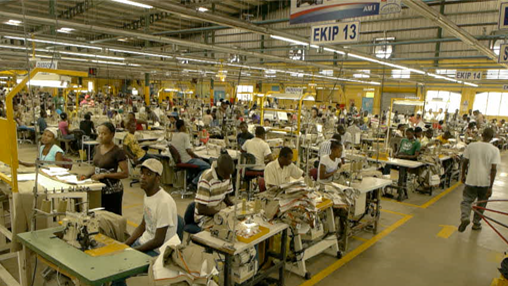The stacks of Calvin Klein t-shirts get smaller by the minute as busy Costco shoppers grab them off the shelves as if they were the season’s hottest items.
Plain white t-shirts are fixtures in any American wardrobe but these particular ones, made of finely woven cotton, seem to provide more bang for the buck.
Little noticed by customers is the ‘Made in Haiti’ label --a seal of workmanship in one of the US’s most competitive markets, the textile industry, which seems to be opening up opportunities for Haitian entrepreneurs and investors.
Codevi, the maker of Calvin Klein t-shirts and other brand garments, employs more than 6,000 Haitians in its Ouanaminthe factory -- a significant contribution to full-time employment in a country where 80 per cent of the workforce is self-employed or works informally.
Decision makers, experts and regular folks on the western half of Hispaniola, agree that more quality jobs are really the only factor that can improve Haiti’s long-term prospects and boost the country’s immediate recovery.
World Bank President Jim Yong Kim hopes to add momentum to this proposition on his first visit to Haiti since taking the helm of the multilateral institution.
Kim will impress the importance of boosting jobs upon Haiti’s senior leadership, including President Michel Martelly and Prime Minister Laurent Lamothe as well as on business leaders, who he’s scheduled to meet over the next two days.
“While there has been much progress in rebuilding Haiti, the country's reconstruction and development will require a sustained effort for a long time. We are committed to supporting Haiti as it moves from emergency reconstruction to economic development in order to create new opportunities for all,” Kim said.
Private investments in the service sector, which tends to create the most jobs, are on the increase.
Power plant E-power, Codevi industrial park, Vietnamese telecom Viettel and the Leopard capital fund are just some recent examples of large local and foreign investments made in association with local entrepreneurs. These ventures, supported by IFC, are creating thousands of well- paying jobs in Haiti.
But it’s not quite enough. The informal sector is still a strong magnet, attracting the majority of Haiti’s 4 million-strong workforce. Mostly made up of unregulated micro and small businesses, the informal sector pays low salaries and provides precarious working conditions, a reflection of low-productivity and lack of economies of scales, according to experts.

